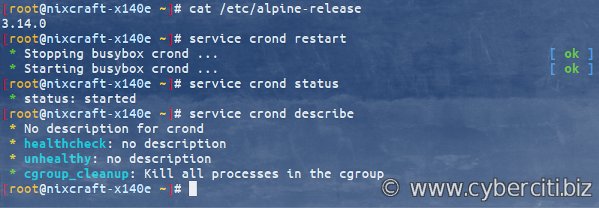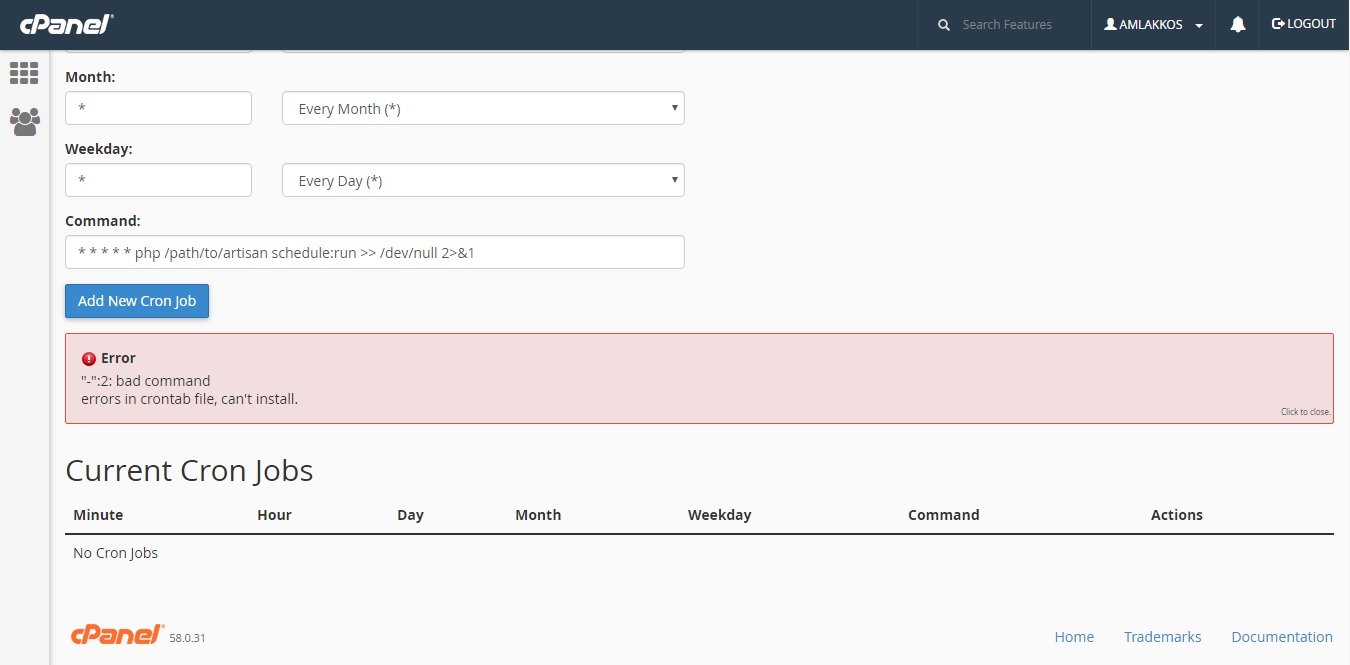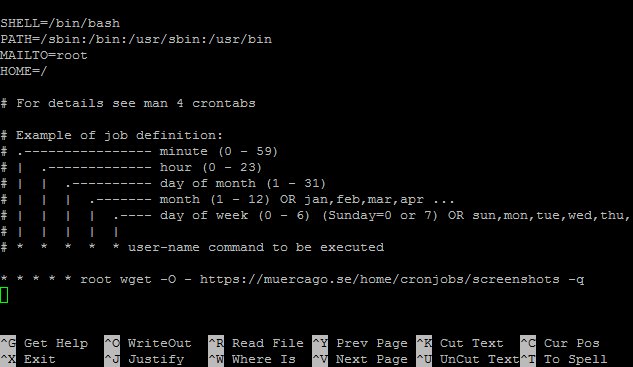Looking to automate your Linux system tasks with ease? Look no further! Crond is the solution you’ve been searching for. Crond, short for cron daemon, is a time-based job scheduler in Linux that allows you to schedule and automate repetitive tasks. Whether it’s running backups, updating system files, or sending emails, crond has got you covered. In this article, we will delve into the ins and outs of crond, exploring its features, functionality, and how to harness its power to simplify your system management. So, let’s dive right in and discover the wonders of crond!
What is crond?
Crond is a daemon that runs on Unix-like operating systems and is responsible for executing scheduled tasks. It is a crucial component in automating routine tasks, making it an essential tool for system administrators. Whether it’s running maintenance scripts, generating reports, or performing backups, crond ensures that these tasks are executed at the specified times without requiring manual intervention.
How does crond work?
Crond operates using a configuration file called “crontab,” short for cron table. The crontab file contains the list of scheduled tasks along with the specific times and commands to execute. These tasks are organized into individual lines, which are known as “crontab entries.”
Each crontab entry is divided into columns, specifying the minute, hour, day of the month, month, and day of the week when the task should run. Additionally, the entry includes the command or script to be executed.
For example, a crontab entry to run a backup script every day at 2:00 AM would look like this:
0 2 * * * /path/to/backup_script.sh
This entry specifies that the command should be executed when the minute is 0, hour is 2, and any day of the month, month, and day of the week.
Managing crontab entries
To manage the crontab entries, the crontab command is used. Here are some common commands to work with crontab:
Viewing crontab entries
To view the existing crontab entries for the current user, simply use the following command:
crontab -l
This will display the contents of the crontab file in the terminal.
Editing crontab entries
To edit the crontab entries, use the following command:
crontab -e
This will open the crontab file in the default text editor. Make the necessary changes to the entries and save the file to apply the changes.
Adding new crontab entries
To add a new crontab entry, use the following command:
crontab -e
This will open the crontab file in the text editor. Add the desired entry following the specified format, save the file, and the new entry will be saved.
Removing crontab entries
To remove all crontab entries, use the following command:
crontab -r
This will remove all the scheduled tasks associated with the current user’s crontab file.
Common use cases for crond
Crond finds its utility in numerous scenarios where automating tasks is essential. Some common use cases for crond include:
System maintenance
Crond is often used to carry out routine system maintenance tasks. These tasks can include cleaning up temporary files, checking for software updates, and optimizing system performance.
Data backups
Regular backups are critical for ensuring data integrity and disaster recovery. Crond can be used to schedule automated backups of files, databases, or entire systems.
Report generation
Many businesses require periodic reports for analysis and decision-making. Crond can be utilized to schedule the generation and delivery of reports, ensuring they are available when needed.
Website maintenance
For websites with dynamic content, crond can be used to automate tasks such as clearing cache, updating content, and running security scans.
Benefits of using crond
Crond offers several benefits that make it a popular choice for automating tasks:
Time-saving automation
By automating routine tasks, crond frees up valuable time for system administrators and other users. Instead of manually executing repetitive tasks, crond takes care of them automatically, allowing users to focus on more critical responsibilities.
Reliability and consistency
With crond, tasks are executed at the specified times consistently. This ensures that crucial tasks, such as backups, maintenance, and report generation, are performed without fail, reducing the risk of human error and ensuring data integrity.
Flexibility and customization
Crond provides a high degree of flexibility in scheduling tasks. Users can define precise schedules down to the minute, allowing for fine-grained control over the execution of tasks. Additionally, crond supports wildcards and ranges in the scheduling syntax, enabling even more customization.
Scalability
Crond can handle a large number of scheduled tasks simultaneously, making it suitable for environments with multiple users and complex automation requirements. Tasks from different users are isolated, preventing interference between them.
In conclusion, crond is an invaluable tool for automating routine tasks on Unix-like operating systems. Its ability to schedule and execute tasks at specific times offers time-saving benefits, reliability, and customization options. Whether it’s system maintenance, data backups, or report generation, crond simplifies the process, allowing users to focus on more critical aspects of their work. With its scalability and flexibility, crond remains a go-to solution for system administrators and users looking to streamline their workflows.
Linux Crash Course – Scheduling Tasks with Cron
Frequently Asked Questions
What is crond and what does it do?
Crond is a daemon process in Unix-like operating systems that executes commands at specified intervals. It is responsible for managing the scheduling of tasks and running them automatically at the specified time or interval.
How can I check if crond is running on my system?
To check if crond is running on your system, you can use the following command: “ps -ef | grep crond”. If crond is running, you will see a line containing “crond” in the output.
How do I create a cron job using crond?
To create a cron job using crond, you need to use the crontab command. The crontab command allows you to edit, list, and remove cron jobs. To create a new cron job, you can use the “crontab -e” command, which opens the crontab file in an editor. You can then add your cron job entry in the file and save it.
Can I schedule a cron job to run only on specific days of the week?
Yes, you can schedule a cron job to run only on specific days of the week. In the cron job entry, you can use the day-of-week field to specify the days on which the job should run. For example, if you want the job to run only on Mondays, you can set the day-of-week field to “1”.
How can I view the list of existing cron jobs?
You can view the list of existing cron jobs by using the “crontab -l” command. This command lists all the cron jobs associated with the current user. Each cron job is displayed in a separate line, showing the schedule and the command to be executed.
Is there a way to redirect the output of a cron job to a file?
Yes, you can redirect the output of a cron job to a file. By default, the output of a cron job is sent as an email to the user who created the cron job. However, you can use the “>” or “>>” operator to redirect the output to a file of your choice. For example, to send the output to a file named “output.txt”, you can append “>/path/to/output.txt” to the cron job command.
Final Thoughts
In conclusion, crond is a powerful tool for automating tasks on Linux systems. With its simple syntax and flexible scheduling capabilities, it allows users to efficiently schedule recurring tasks. By running in the background and constantly monitoring the system, crond ensures that tasks are executed at the specified intervals, providing convenience and reliability. Whether it’s managing backups, updating databases, or performing routine maintenance, crond is an essential tool for any Linux administrator. Stay organized and efficient with crond, the reliable task scheduler.



